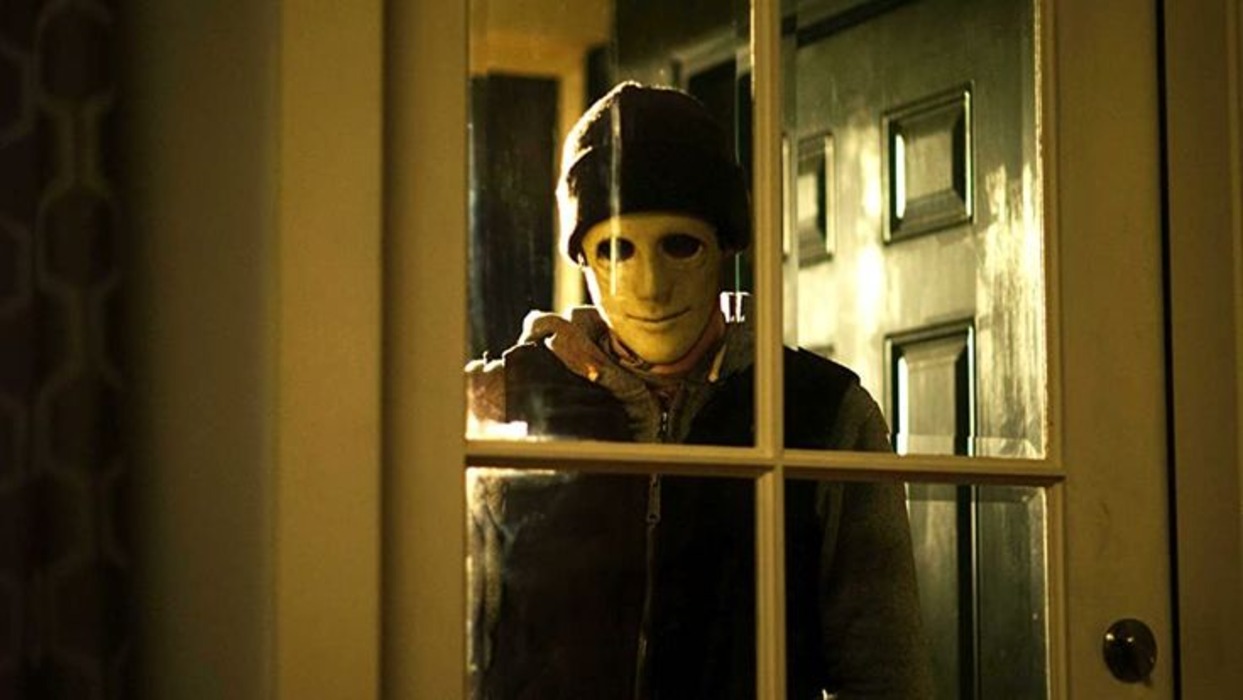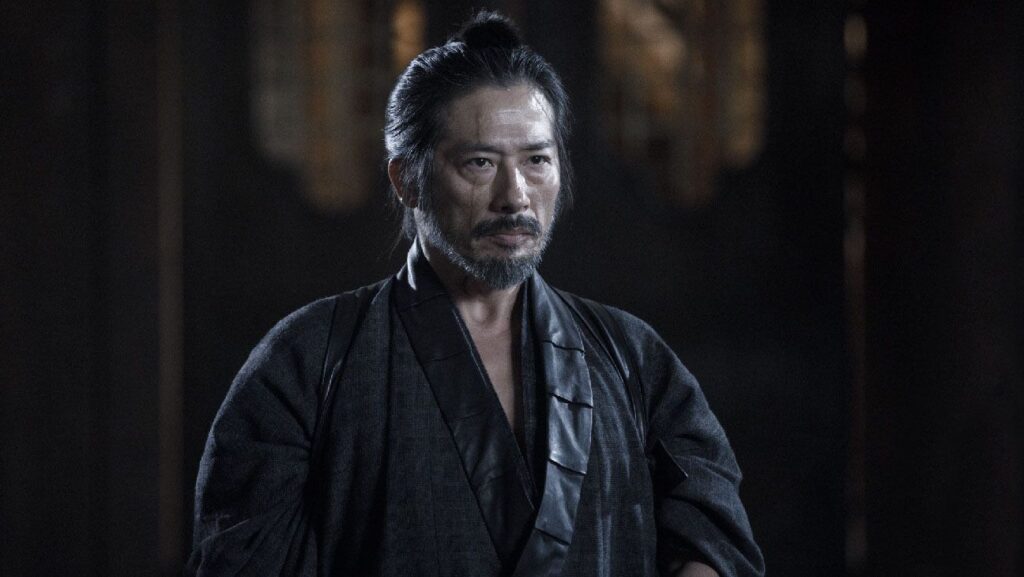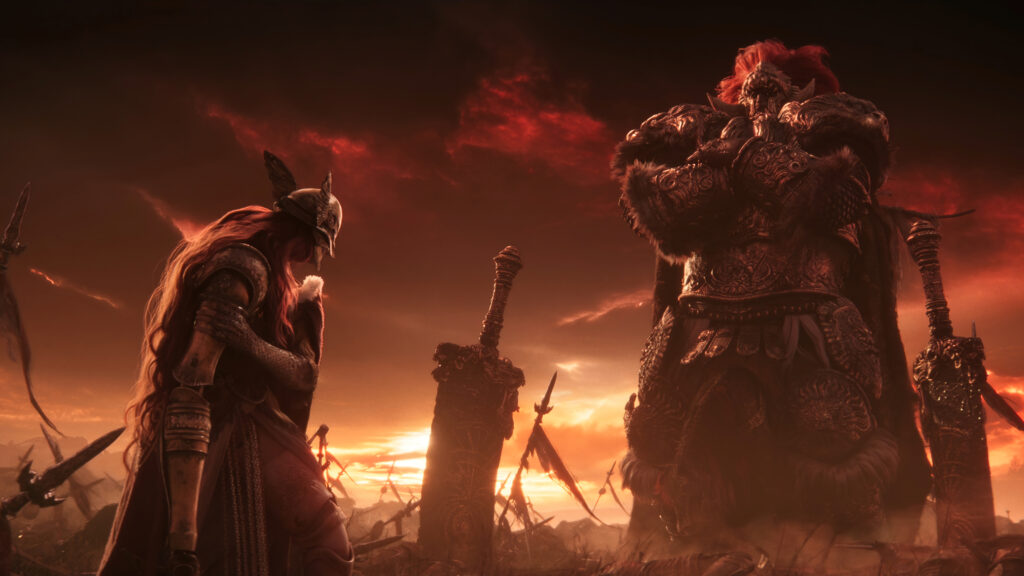From the depths of human depravity to the intricate web of the mind’s darkest corners, cinema has consistently gravitated towards exploring the shadowy realms of the human psyche. For generations, audiences have been drawn to the allure of serial killer and psychological thriller movies, entranced by their ability to navigate the labyrinthine complexities of human behavior and motivation. In this carefully curated selection, we embark on a journey through the annals of cinematic history, venturing into the realms of terror, suspense, and psychological intrigue. Each film serves as a portal into the abyss of human nature, offering a visceral and unforgettable exploration of the human condition. So, prepare to be enthralled as we delve into the haunting depths of these captivating narratives, where the line between reality and nightmare blurs and the true essence of humanity is laid bare.
Exploring the Depths: Top Serial Killer and Psychological Thriller Movies Worth Watching
The Silence of the Lambs (1991)
Directed by the visionary Jonathan Demme, emerges as a cinematic tour de force, offering a mesmerizing journey into the shadowy depths of the human psyche. This psychological thriller stands as a pinnacle of the genre, captivating audiences with its gripping narrative, stellar performances, and haunting atmosphere. As a fervent aficionado of suspenseful cinema, I found myself inexorably drawn into the twisted world depicted on screen, leaving an indelible impression that continues to resonate.
At the heart of the film lies the relentless pursuit of a cunning serial killer, masterfully portrayed by Anthony Hopkins in his bone-chilling incarnation of the iconic Dr. Hannibal Lecter. Hopkins’s portrayal is nothing short of mesmerizing, his every word laced with sinister allure and psychological manipulation. Opposite him, Jodie Foster delivers a powerhouse performance as FBI trainee Clarice Starling, her unwavering determination and vulnerability adding depth to the character’s complex journey.
From the eerie cinematography to the haunting score, every aspect of “The Silence of the Lambs” is meticulously crafted to immerse the viewer in a world of darkness and intrigue. Jonathan Demme’s direction skillfully navigates the labyrinthine twists and turns of the narrative, keeping audiences on the edge of their seats as the tension mounts with each passing moment.
As the story unfolds, secrets are revealed, and the boundaries of morality and sanity are called into question. The film’s palpable atmosphere of suspense and uncertainty keeps viewers captivated, inviting them to ponder the deeper themes explored within its narrative. “The Silence of the Lambs” is more than a mere thriller; it is a profound exploration of the human condition, delving into the darkest corners of the mind and leaving an enduring impact on all who dare to venture into its chilling embrace. Those who love serial killer movies would love “The Silence Of The Lambs (1991)” as well.
Zodiac (2007)
Jake Gyllenhaal’s mesmerizing portrayal of Robert Graysmith, a cartoonist consumed by the enigma of the serial killer’s identity, adds layers of depth to the narrative, capturing the audience’s imagination with each nuanced performance. Alongside him, Robert Downey Jr. and Mark Ruffalo deliver compelling performances, further enriching the film’s multifaceted exploration of the human psyche in the face of incomprehensible evil.
Jake Gyllenhaal’s mesmerizing portrayal of Robert Graysmith, a cartoonist consumed by the enigma of the serial killer’s identity, adds layers of depth to the narrative, capturing the audience’s imagination with each nuanced performance. Alongside him, Robert Downey Jr. and Mark Ruffalo deliver compelling performances, further enriching the film’s multifaceted exploration of the human psyche in the face of incomprehensible evil.
As the story unfolds, “Zodiac” masterfully navigates the intricate web of clues and suspects, immersing viewers in a relentless quest for truth and justice. The film’s atmospheric cinematography heightens the sense of unease, evoking a palpable tension that permeates every scene. With each twist and turn, the shadow of the serial killer looms large, casting a chilling pall over the characters’ lives and driving them to the brink of obsession.
In the end, “Zodiac” stands as a testament to the enduring power of the human spirit in the face of darkness, offering a poignant reminder of the human cost of pursuing justice in the presence of a serial killer whose identity remains shrouded in mystery. Those who love serial killer movies would love “Zodiac (2007)” as well.
American Psycho (2000)
Under the meticulous direction of Mary Harron, plunges into the chilling psyche of a remorseless serial killer, offering a chilling examination of narcissism and the twisted underbelly of the American Dream. As an enthusiast captivated by the intricacies of human psychology, this film resonated deeply with me from its very inception. Christian Bale’s portrayal of Patrick Bateman, a charismatic yet deeply disturbed investment banker, stands as a tour de force performance that unravels the layers of moral depravity within the character’s psyche. Harron’s deft direction imbues the film with an unsettling sense of dread and surrealism, challenging viewers to confront the disturbing realities lurking beneath the facade of success and sophistication.
In “American Psycho,” the enigmatic Patrick Bateman embodies the quintessential image of a serial killer, his veneer of charm and affluence masking a dark and insidious obsession with violence and power. Bale’s nuanced portrayal delves into the depths of Bateman’s twisted psyche, blurring the lines between reality and delusion as he navigates a world consumed by greed and excess.
Harron’s directorial vision heightens the film’s sense of foreboding, weaving a narrative that oscillates between moments of dark humor and visceral horror. As the story unfolds, viewers are drawn into a nightmarish descent into madness, grappling with the unsettling realization that the true horrors lie not in the shadows, but within the depths of the human soul.
Through its chilling exploration of narcissism and moral decay, “American Psycho” forces audiences to confront uncomfortable truths about society and the darker aspects of human nature. It is a film that lingers in the mind long after the credits roll, leaving an indelible impression and prompting reflection on the fragility of sanity and the allure of darkness. Those who love serial killer movies would love “American Psycho” as well.
Se7en (1995)
Crafted under the masterful direction of David Fincher, stands as a pinnacle of suspense and psychological tension, ensnaring me in its grip from the opening scene to its chilling conclusion. As an aficionado of atmospheric thrillers, this film surpassed all expectations, immersing me in its dark and foreboding atmosphere from start to finish. The dynamic interplay between Morgan Freeman’s seasoned detective William Somerset and Brad Pitt’s impulsive David Mills adds layers of complexity to the narrative, while Kevin Spacey’s portrayal of the enigmatic serial killer, John Doe, sends shivers down the spine.
Fincher’s meticulous direction orchestrates a symphony of suspense, keeping viewers on the edge of their seats as the cat-and-mouse game between detective and serial killer unfolds with palpable tension. Each scene is infused with a sense of dread and impending doom, drawing me deeper into the twisted mind of the perpetrator as the investigation unravels.
As the narrative twists and turns, the true horror of the serial killer’s motives is gradually revealed, leaving an indelible mark on the psyche long after the credits have rolled. “Se7en” is not merely a thriller; it is a chilling exploration of the darkest depths of human depravity, forcing audiences to confront uncomfortable truths about the nature of evil and the fragility of morality.
In the end, “Se7en” stands as a testament to the power of storytelling, leaving me haunted by its disturbing themes and profound insights into the human condition. It is a film that lingers in the mind, its impact enduring far beyond the confines of the screen. Those who love serial killer movies would love “Se7en” as well.
Psycho (1960)
Alfred Hitchcock’s “Psycho” stands as an enduring cinematic masterpiece that continues to grip and terrify audiences with its unparalleled suspense and psychological depth, even decades after its initial release. As a devoted aficionado of classic horror films, this iconic thriller holds an indelible place in my cinematic repertoire. From the hauntingly atmospheric score to the unforgettable shower scene, each frame of “Psycho” is meticulously crafted to evoke a sense of unease and fascination, drawing viewers into its chilling narrative.
Anthony Perkins’s portrayal of the troubled motel manager, Norman Bates, is nothing short of mesmerizing, seamlessly blending vulnerability and menace to create a character both sympathetic and sinister. Bates’s transformation from a seemingly harmless innkeeper to a calculating serial killer is executed with nuance and complexity, leaving an indelible mark on the annals of cinematic history.
As the narrative unfolds, Hitchcock masterfully blurs the lines between reality and illusion, plunging viewers into a labyrinth of suspense and psychological intrigue. The revelation of Bates’s true identity as a serial killer sends shockwaves through the narrative, challenging perceptions and leaving audiences reeling in disbelief.
“Psycho” remains a timeless classic that continues to exert a profound influence on generations of filmmakers, its legacy enduring as a testament to the power of storytelling and the enduring allure of the macabre. In the pantheon of horror cinema, “Psycho” stands as a towering achievement, its impact transcending the boundaries of time and genre to cement its status as a true cinematic landmark. Those who love serial killer movies would love “Psycho” as well.
M (1931)
Fritz Lang’s “M” stands as a chilling masterpiece, a landmark in cinema that delves into the darkest recesses of the human psyche with its profound exploration of crime and punishment. As a passionate cinephile with a deep appreciation for classic cinema, this film left an indelible mark on me, resonating with its powerful storytelling and haunting imagery.
At the heart of “M” lies Peter Lorre’s mesmerizing portrayal of the child murderer, a performance that grips you from the very first scene and refuses to let go. Lorre’s portrayal of the serial killer is both haunting and unforgettable, his portrayal capturing the essence of a tormented soul consumed by darkness.
Under Fritz Lang’s innovative direction, “M” transcends the confines of a conventional crime thriller, evolving into a timeless meditation on justice, morality, and the depths of human depravity. Lang’s use of German Expressionism imbues every frame with a palpable sense of dread, enveloping the viewer in a world shrouded in shadows and ambiguity.
As the narrative unfolds, “M” forces audiences to confront uncomfortable truths about the nature of evil and the fragility of societal order. In a world plagued by chaos and moral ambiguity, the hunt for the serial killer becomes a harrowing journey into the heart of darkness, where the line between good and evil blurs and justice hangs in the balance.
Ultimately, “M” stands as a testament to the enduring power of cinema to provoke thought and challenge perceptions. Its timeless themes and haunting imagery continue to captivate audiences, cementing its status as a true cinematic masterpiece that transcends the boundaries of time and genre. Those who love serial killer movies would love “M (1931)” as well.
The Girl With the Dragon Tattoo (2011)
Directed by David Fincher, “The Girl With the Dragon Tattoo” is a mesmerizing journey into the depths of mystery and intrigue that had me captivated from beginning to end. As an avid enthusiast of intricate narratives and compelling characters, this film struck a chord with me on numerous levels. Rooney Mara’s portrayal of the enigmatic hacker Lisbeth Salander is nothing short of mesmerizing, her performance breathing life into a character shrouded in darkness and complexity. Opposite her, Daniel Craig delivers a nuanced performance as journalist Mikael Blomkvist, their dynamic partnership driving the narrative forward with intensity and depth.
David Fincher’s signature atmospheric direction sets the stage for a gripping tale of suspense and deception, while Trent Reznor’s haunting score adds a layer of tension that keeps you on the edge of your seat throughout the film. As the mystery unfolds and secrets are revealed, “The Girl With the Dragon Tattoo” weaves a captivating narrative that delves into the darkest corners of human nature.
In the heart of the story lies a series of gruesome murders, perpetrated by a cunning serial killer whose identity remains shrouded in mystery. As Lisbeth and Mikael delve deeper into the investigation, they uncover a web of lies and deceit that leads them closer to the truth. With each twist and turn, the tension mounts, drawing viewers into a chilling game of cat and mouse with a killer who lurks in the shadows.
Ultimately, “The Girl With the Dragon Tattoo” is a masterclass in suspenseful storytelling, a riveting cinematic experience that leaves a lasting impression. From its compelling characters to its intricate plot, this film is a testament to the power of storytelling to captivate and enthrall audiences. Those who love serial killer movies would love “The Girl With the Dragon Tattoo” as well.
Shutter Island (2010)
In Martin Scorsese’s “Shutter Island,” viewers are plunged into a world of psychological torment and suspense as US marshals Teddy Daniels and Chuck Aule investigate the mysterious disappearance of a patient from a remote mental institution. As a connoisseur of psychological thrillers, I found myself enthralled by the film’s intricate storyline and haunting atmosphere. Leonardo DiCaprio delivers a captivating performance as Daniels, whose troubled past and inner demons threaten to unravel his sanity. Mark Ruffalo’s portrayal of Aule adds depth to the dynamic duo, their partnership tested by the dark secrets lurking within the island’s walls.
Throughout the film, Scorsese masterfully blurs the lines between reality and illusion, leading viewers on a twisted journey into the depths of madness. As Daniels and Aule uncover clues and confront their own fears, they come face to face with the chilling truth behind the island’s sinister facade. It’s a race against time to unravel the mystery before it’s too late, and the tension mounts with each revelation.
At the heart of the story lies the enigmatic figure of Andrew Laeddis, a patient rumored to be a dangerous serial killer responsible for unspeakable atrocities. As Daniels delves deeper into the investigation, he becomes increasingly obsessed with uncovering the truth, even if it means confronting his own darkest fears. The line between hunter and hunted blurs as Daniels grapples with his own sanity and the sinister forces at play on Shutter Island.
In the end, “Shutter Island” is more than just a thriller—it’s a psychological rollercoaster that delves into the darkest corners of the human mind. With its gripping storyline, stellar performances, and atmospheric direction, this film is a testament to Scorsese’s mastery of the genre and a must-watch for fans of suspenseful cinema. Those who love serial killer movies would love “Shutter Island” as well.
The Shining (1980)
In Stanley Kubrick’s “The Shining,” viewers are plunged into a world of psychological torment and suspense as Jack Torrance, played by the legendary Jack Nicholson, takes on the role of the caretaker of the Overlook Hotel. As a connoisseur of atmospheric horror, this film left me spellbound with its chilling atmosphere and iconic performances. Nicholson’s portrayal of the increasingly unhinged Torrance is a tour de force of acting, while Shelley Duvall’s portrayal of his terrified wife Wendy adds to the film’s sense of dread. Kubrick’s meticulous attention to detail and mastery of visual storytelling create a sense of unease that lingers long after the credits roll. “The Shining” is a timeless classic that remains as unsettling today as it was upon its release.
Amidst the eerie ambiance of the Overlook Hotel, whispers of a dark secret emerge, hinting at a history stained by bloodshed. Jack Torrance’s descent into madness fuels speculation among the staff and guests, with some even suspecting him of being a serial killer. As the isolation of the hotel amplifies the tension, the line between reality and hallucination becomes increasingly blurred. The specter of a serial killer lurking in the shadows adds an extra layer of terror to an already chilling tale.
As Torrance’s grip on reality loosens, the hotel’s dark past resurfaces, revealing a series of grisly murders committed by a previous caretaker—a notorious serial killer who slaughtered his family before taking his own life. The hotel’s sinister history casts a long shadow over Torrance’s descent into madness, fueling his increasingly violent behavior. The revelation of the hotel’s dark secrets adds a new dimension to the horror, as Torrance grapples with the possibility that he may be following in the footsteps of the previous caretaker-turned-serial killer.
In the climactic moments of “The Shining,” the true extent of Torrance’s madness is laid bare, as he unleashes a reign of terror upon his family. The hotel’s malevolent influence transforms him into a remorseless killer, driven by dark impulses beyond his control. As the body count rises and the hotel’s secrets are brought to light, Torrance’s transformation into a serial killer is complete. In the end, “The Shining” stands as a harrowing exploration of the human psyche, where the line between reality and madness fades into obscurity. Those who love serial killer movies would love “The Shining” as well.
Rear Window (1954)
Alfred Hitchcock’s “Rear Window” stands as a testament to the master of suspense’s unparalleled ability to captivate audiences with intricate storytelling and spine-tingling tension. As a devotee of Hitchcock’s cinematic brilliance, this film has left an indelible impression on me, showcasing his genius in crafting a narrative that keeps viewers enthralled from start to finish. James Stewart’s portrayal of a wheelchair-bound photographer, who unwittingly becomes entangled in a murder mystery unfolding across the courtyard, is nothing short of mesmerizing. Alongside him, Grace Kelly’s performance as his daring girlfriend adds layers of intrigue and sophistication to the storyline.
Hitchcock’s direction is nothing short of masterful, utilizing innovative techniques such as point-of-view shots to immerse viewers in the protagonist’s voyeuristic world, where every glimpse through the window unveils a new layer of suspense. “Rear Window” stands as a timeless classic, showcasing Hitchcock’s prowess in creating an atmosphere of palpable unease and intrigue that lingers long after the final credits roll.
As the story unfolds, the protagonist’s seemingly mundane observations from his apartment window take a sinister turn when he begins to suspect that one of his neighbors may be a serial killer. The gradual unraveling of this chilling revelation adds an extra layer of tension to an already gripping narrative, as the protagonist becomes increasingly consumed by the need to uncover the truth behind the mysterious disappearances occurring just beyond his view.
With each passing moment, the sense of dread intensifies as the protagonist delves deeper into the mystery, piecing together clues and unraveling the dark secrets hidden within the confines of the apartment complex. The specter of a serial killer lurking in the shadows adds a sinister undercurrent to the story, heightening the stakes and keeping viewers on the edge of their seats until the heart-pounding climax.
In the final, nail-biting moments of “Rear Window,” the truth is finally revealed, culminating in a thrilling showdown that will leave audiences breathless. As the tension reaches its peak, Hitchcock delivers a masterstroke of suspense, cementing “Rear Window” as a timeless classic that continues to captivate and terrify audiences with its masterful blend of mystery, intrigue, and chilling suspense. Those who love serial killer movies would love “Rear Window” as well.
Unraveling the Enigma: A Journey into Darkness
As the final moments of these cinematic masterpieces unfold, the impact reverberates long after the theater lights dim and the credits roll. These films transcend mere entertainment, delving deep into the recesses of the human psyche and sparking introspection about the very essence of existence. They leave an indelible mark on the viewer’s mind, prompting contemplation on the eternal struggle between good and evil, the fragile boundaries of sanity, and the enigmatic depths of human nature.
Indeed, serial killer and psychological thriller movies possess a unique power to captivate audiences with their gripping narratives and haunting performances. From the chilling portrayals of depravity to the intricate unraveling of psychological mysteries, each film offers a visceral exploration of the human condition. They confront us with uncomfortable truths and challenge us to confront our own fears and desires, blurring the line between reality and nightmare.
So, as you prepare to immerse yourself in the darkness of the cinema, heed the call to dim the lights and surrender to the allure of these compelling narratives. For within their shadows lie profound revelations and unsettling truths, inviting us to embark on a journey into the depths of the human soul, where the true nature of humanity is laid bare for all to see.
Check out other serial killer movies from here.
Take a look at our various posts from here.





